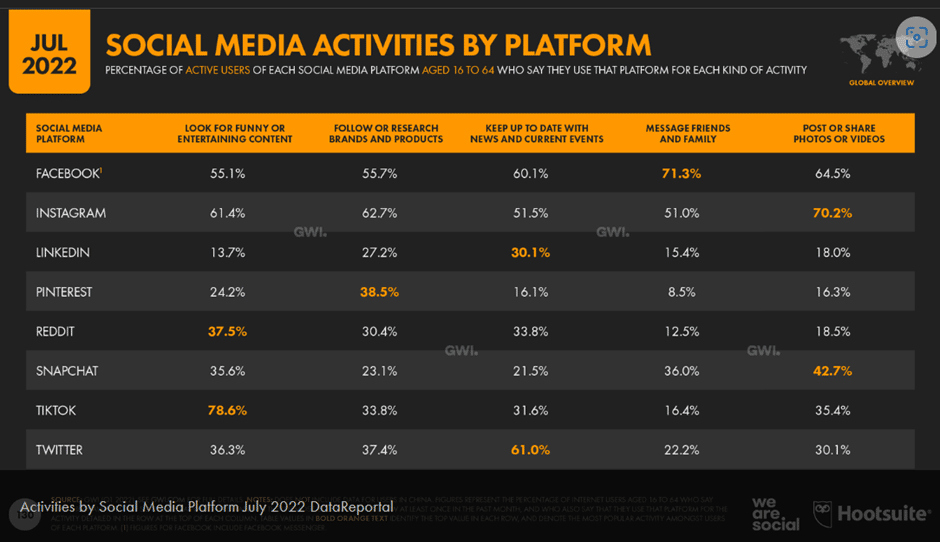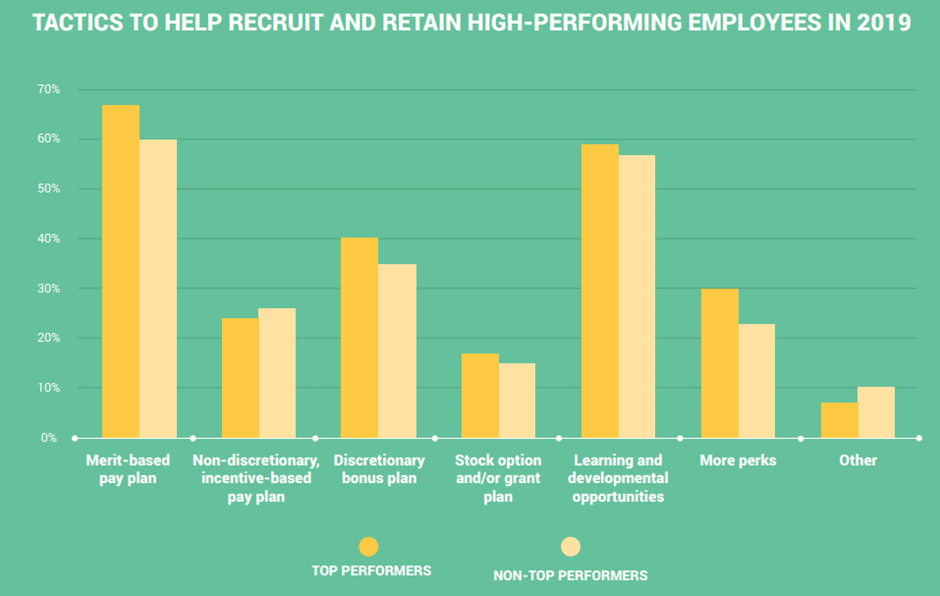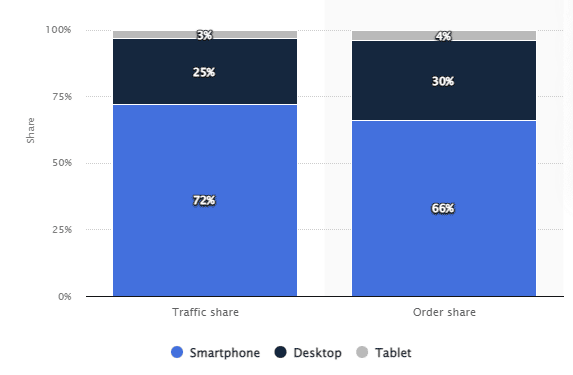According to Statista, retail e-commerce sales are projected to grow by 50 percent to hit approximately $7.4 trillion by 2025. With the number of digital buyers reaching over 2 billion in 2021, online shopping isn’t slowing down anytime soon.
Source (statista.com)
When done right, an ecommerce business can be highly profitable and rewarding. However, not all ecommerce businesses thrive – only those with the right resources and infrastructure succeed in this highly competitive field.
So, how do you manage your business’s human resources effectively to ensure consistent and unwavering productivity?
Keep reading to find out.
Why Establish an eCommerce Business?
Before we talk about the tips to develop a successful and productive ecommerce team, let’s talk about why ecommerce is important for business.
The latest statistics reveal that the ease and convenience of online shopping are among the top reasons why people shop online. But that’s not all. Other factors that drive more people towards online shopping include:
- Free delivery, resulting in cost savings
- Easy return policies
- Coupons and discounts
- Quick check-out process
- The ability to read reviews and comments from other customers
Establishing an ecommerce platform offers a wide range of opportunities to business owners. From the chance to expand their market reach, generate more sales, and tap into new market opportunities, ecommerce is easily scalable.
What’s more, thanks to real consumer behavior and engagement metrics, you can develop your business to match their specific needs. Not to mention the ability to introduce new products, features, and payment options as your site grows.
All of these can only be possible if your ecommerce team helps you build a user-friendly and optimized site that offers consumers personalized services.
How to Build a Productive eCommerce Team
Now, before you start building your team, there are a few factors you need to consider:
Determine your business needs
Every business is unique and will therefore require a different approach. Start by identifying the needs specific to your business. For example, do you process hundreds of customer orders daily? Then you might want to hire someone with experience in bulk order processing to ensure timely package delivery.
Identifying these needs will help you determine the number of employees you should have to successfully meet your short- and long-term goals.
Know your staffing size
You’ll want to know which roles to hire for, when to hire, how many employees should be on-site (if necessary), or whether your team should be fully remote. Of course, your staff size will be affected by several factors, such as:
- Sales revenue. Can you afford to hire and sustain additional staff? If not, then you can explore other avenues.
- Organization goals. What are your company’s strategic business plans for the long term? What are the company objectives and what are the key metrics that can help you maintain an efficient staff structure?
- Current staff. When you analyze current staff, do you see gaps that need to be filled? Are there employees nearing retirement, or maternity/paternity leaves? Are they competent enough in their roles or do they need replacing?
- Expected business growth. If you’re planning on increasing product launches, you may require additional staff to keep things flowing smoothly.
- Future staffing needs. Analyzing trends in turnover, maternity/paternity leave, and retirement can help spot patterns in your staffing needs. Using historical data will help you determine when you need additional staff or when to downsize.
Since your business is mostly online, investing in new technology might help lower staffing needs due to automation and improved efficiencies. Essentially, your staffing needs will be dictated by the various aspects affecting your business.
Determine your hiring needs
If you’re a midsize or large e-commerce brand, your HR team will handle employee hiring and training needs. Otherwise, you’ll have to create time to find the right hires and train them.
Finding eCommerce specialists isn’t going to be easy. First, you need to identify the talent gaps, determine your budget, create a job description and publish it. On top of that, you have the difficult task of finding a good quality hire.
Say your goal is to build up direct sales from your website. You’ll reap more benefits if you hire someone with proven email marketing skills.
Know what to do in-house and what to outsource
Whenever an opportunity to cut costs presents itself, consider taking it. For example, hiring external UX pros to keep your website attractive and easy to navigate. Outsourcing shipping processes to dropshipping service providers can also save you time and money.
Building an effective e-commerce business requires a significant investment in human resources. Therefore, assess your processes and determine what and when to outsource or when to expand your team.
12 Tips for Building a Productive eCommerce Team
With that in mind, here are some top tips to build an effective and productive ecommerce team.
1. Hire the Right People for the Right Roles
First things first, your journey towards success starts by hiring the right people to fill the different roles in your company. You don’t want to hire the wrong team to handle your social media marketing, for example.
Source (datareportal.com)
Keep in mind that if a customer encounters a negative experience on your mobile website, they are less likely to buy from your business in the future. Being a competitive industry, you don’t have room for errors and subpar performance.
It doesn’t matter where your employees are working from (on-site or remote), it pays to only hire experienced and skilled team members who are cut out for the job. On the same note, consider designing an efficient onboarding process that will help you quickly get a new team member up to speed.
So, how do you hire the right people for your ecommerce business?
- Define your brand culture and values. The first step is to examine your business and determine where you need an extra pair of hands. What does your business currently need the most? For instance, if you spend nearly 80 percent of your day shipping orders, that strongly suggests that you need to hire someone to optimize your shipping process. Alternatively, you may consider outsourcing to a third-party fulfillment service.
- Create a detailed job description that clearly communicates the job requirements. Come up with a recruiting strategy that includes details like what will determine success for a candidate. Remember to state the salary in the job description to set the pace for negotiations.
- Finding the right people. When looking for someone to hire, referrals are your best friend. Consult with your friends who are running online businesses to see if you can find the right fit. However, just because a candidate comes highly recommended doesn’t mean you shouldn’t do your due diligence. Interview them before making a decision.
- Prepare a well-structured interview. Consider using video chat to see the potential candidate in action. Involve current employees in the recruitment and hiring process to determine if the new hire is the best fit for your other team members. This provides stakeholders with the opportunity to offer feedback on the candidate.
- Be on the lookout for red flags. People always post nice things about themselves, and not all of them are true. That’s why you should watch out for redflags like poor preparation, a lack of interest in company goals and mission, a lack of transparency, too much self-talk, and so on.
- Conduct a background check to ensure that no serious redflags exist before bringing the new hire on board. You want to be sure you’re making the right decision.
2. Provide Ongoing Training and Development
Hiring the right team isn’t enough. Continuous training and development is necessary to keep your business relevant to the ever-evolving business world. Offering your staff career growth opportunities prevents them from hitting the ceiling.
These could range from webinars, organizing networking dinners, or enrolling them in (online) certificate courses.
These learning opportunities motivate your workers to stick around, on top of empowering them to keep excelling at their roles. Other incentives to consider include:
- Competitive compensation
- Promotions
- Gym membership
- Monetary rewards based on sales results
Source (payscale.com)
Remember, a happy team is a productive team, and investing in initiatives that interest them can be great motivators.
3. Build a Balanced Team
When you’re building your ecommerce team, balance is key. While not easy to achieve, strive to balance between front-end and back-end expertise. As much as you have the best creative team, if there are delays in shipping out orders, you will lose consumers.
Likewise, if your team helped create an outstanding website that’s intuitive and well-functioning, but with poor marketing, people are less likely to find it. To ensure a sustainable business where all teams are working seamlessly, you must strike the right balance.
4. Develop a Culture of Trust
Research by the Workforce Institute highlights that 58 percent of employees say a lack of trust affects their career choices. If you want to build an efficient, engaged, and collaborative team, promote a culture of trust in the workplace.
Source (workforceinstitute.org)
Building a team where trust thrives can be beneficial for your business:
- Employee loyalty and retention will increase
- Employee stress and burnout will be at a minimum
- You empower team members to make decisions
- You’ll see an increase in productivity and engagement
But how do you build trust in the workplace?
- Ensure there’s psychological safety. Employees will feel more empowered if there’s transparency and openness in expressing their opinions. When you create an environment that makes employees feel their insights matter and are appreciated, they will feel respected and like part of the team. In the end, they will become more engaged.
- Ensure transparent employee communications. A workplace that promotes more transparent communication allows team members to be more trustworthy and collaborative. It also promotes innovativeness and creativity.
- Share crucial company information with employees. An excellent way to show you value the support and contribution of team members is to share important company information, especially if it’s affecting them. Making decisions on the side and sharing the results won’t be seen as an inclusive move and might lead to resentment, or worse, an increase in turnover.
- Ensure your leadership is approachable. Good leadership has a positive impact on employee performance. A leader who motivates their team members, leads by example, listens to and acts on feedback, and has an open-door policy is more likely to build a culture of trust. As a leader, you must strive to get the best out of your team members and maintain a healthy employer-employee relationship.
- Adopt the employee-centric approach. A company that encourages open communication and feedback, provides psychological safety, and encourages innovation is more likely to win employees’ trust than one that doesn’t. An employee-centric approach puts the workforce’s needs first and promotes the “how will we achieve it together?” mindset.
- Enable efficient peer-to-peer communication. Promoting effective communication between workplace peers breeds a culture of mutually respectful relationships, which can boost engagement and productivity.
5. Set Clear Expectations and Measurable Goals
Whether your team works from a central location or remotely, you need to streamline your operations. That’s why you must set clear expectations for your entire team from the word go.
That way, each team member will know exactly what’s expected of them right from the start. What’s more, the goals and expectations will establish the type of environment and conditions your team will be working under.
For example, let your workers know when to clock in and clock out, if you allow overtime (and the limit), when to communicate about sick days, and so on. If they are hourly employees, how many hours are they allowed to log per day?
Consider implementing a reliable clock-in clock-out system that will help you monitor employee attendance and let them know about the system. You want to know who’s working and who’s on vacation so you can manage workload more effectively to prevent some members from overworking.
6. Hire a Manager
If you let every team member be in charge, you can be sure to run into problems executing operations. Just like a physical store needs a manager, so does your ecommerce store. One of the first steps to ensuring an efficient and productive team is to appoint a manager to oversee all business operations.
Among other things, the manager will guide and direct your team and ensure proper utilization of resources. You don’t have to hire a full-time manager or even a full-time team. Nevertheless, so long as you have a team, you’ll need someone to supervise them.
Most importantly, define the specific responsibilities and roles of the manager, which include:
- Managing your ecommerce team and their roles
- Managing business communications, services, and processes
- Reporting to upper management
- Monitoring, analyzing, and improving online sales strategies
7. Give Team Members Autonomy
Something creatives and specialists don’t like is being bothered every other second. Constant monitoring and overly limited freedom in what they can do can affect their morale, which will negatively impact their productivity.
Trusting your team and having confidence in what they do will make life easier for everyone. Therefore, offer flexible scheduling and remote opportunities, and leverage remote monitoring solutions to track an individual’s performance and activity levels.
Remember, you picked the most qualified and experienced candidates during the hiring process. So, trust them to do their jobs.
8. Personalise Workflows for Maximum Productivity
First, you need to understand the working habits of each team member. When are they the most productive? What are their strengths and weaknesses? Once you know this, work closely with them to personalize workflows in a way that maximizes their productivity.
For example, to ensure efficient task management, prepare a list of tasks for the week beforehand for each team member. If you have large projects, break them into smaller chunks and distribute these tasks accordingly.
You can group tasks into milestones, prioritize the tasks by most important, and set deadlines. Creating a task management workflow for the entire week makes scheduling easy and reduces time wastage with decision-making.
Be sure to include coworkers in the decision-making process to keep everyone on the same page when it comes to task execution.
Letting everyone work on what they do best and when they are at their best will ensure better collaboration and improved performance.
9. Leverage the Right Technology for Better Efficiency
There’s no doubt about the role of technology in eCommerce. Data from Statista shows that mobile phones accounted for 72 percent of retail site visits in the UK during the second quarter of 2022. 66 percent were used to make online shopping orders.
Source (statista.com)
From streamlining workflows and managing payments to handling shipping orders, you don’t have to do everything manually. Technology ensures you meet customer demands, satisfy their needs, and make timely deliveries.
In addition, the right software will make your and your employees’ work more efficient and their life easier.
Consider a time tracking tool, for example. It allows you to track how your workers spend company time and monitor project progress and performance. Tracking time usage improves workflow visibility and offers insightful data that provides business intelligence that can help you make impactful decisions.
Another area where technology comes in handy is team collaboration. With remote work on the rise, technology helps ensure seamless digital collaboration. Using cloud storage services like Google Drive and project management systems like Asana, managers can easily connect with team members, assign tasks, and check on work progress in real-time.
Likewise, an inventory management system allows you to make omnichannel sales viable. Other types of technologies that have enabled ecommerce businesses to achieve such great success include:
- AI (Artificial Intelligence), which helps personalize shoppers experience
- Chatbots, which help provide services to customers 24/7
- Mobile payment services, which streamline payment processes for customers
10. Set Priorities and Keep Your Team Informed
You can promote streamlined workflows by setting up workday procedures, such as daily to-do tasks for each team member. This way, not only will you eliminate clutter in your employees’ minds but also help them focus on the right priorities.
As a result, time and resource wastage will be at a minimum and there won’t be delays. Sometimes, urgent requests may come in, and you might have to reassign tasks. Just be sure to clearly communicate changes on time and set reasonable deadlines.
11. Create Feedback Loops
As a business owner, you know that listening to customer complaints and acting on them is critical to promoting business growth. The same goes for retaining employees and boosting engagement.
According to Forbes, 74 percent of employees do their jobs more effectively when they feel heard. Overlooking employees can lead to disengagement and low productivity. Remember, employees play a crucial part in the business and if they are not happy, customers won’t be happy, and your business will suffer.
Therefore, find strategies to empower your employees to feel heard. One efficient strategy is feedback, which goes both ways – you’ll learn what processes don’t work for your team and make some changes. Likewise, employees can learn from their mistakes and prevent possible misunderstandings.
Be sure to actively listen to what your workers have to say as this makes them feel valued and important. If your team is remote, find the best communication channels like Slack or Microsoft Teams to empower them to share their opinions.
12. Reassess Your Work Processes and Business Needs
As you scale, the number of people you’ll need to run your eCommerce business will grow exponentially. Your business hiring needs will change depending on its scale and the products/services you sell. A reliable HR management tool can save you valuable time that could be spent finding the right people.
In addition, you must reassess your work processes and discontinue those that don’t work out well for your business. Remember to involve your employees when reviewing workflows and business operations before implementing any changes.
Wrapping Up
To manage and maintain an efficient e-commerce business, you must give it all the attention it needs. It all starts with a team you can trust and whose goals align with that of your business.
Proper team management is just one of the many steps you’ll take to set your ecommerce business up for success.
Want to empower your eCommerce team to perform at their best? Brightpearl gives you the operational clarity and automation you need to eliminate bottlenecks, streamline workflows, and scale with confidence. Book a demo to see how Brightpearl can supercharge your team’s productivity.









